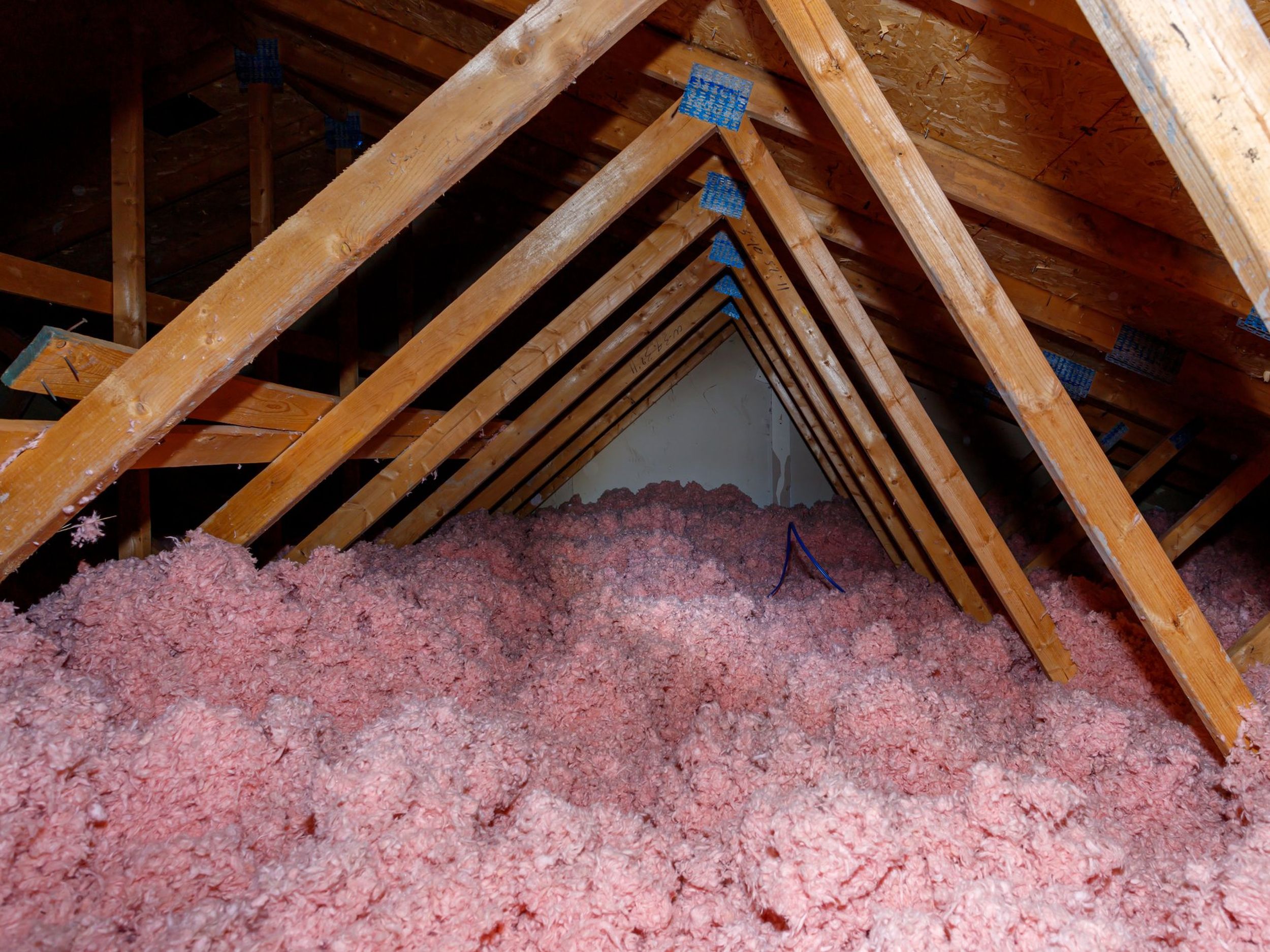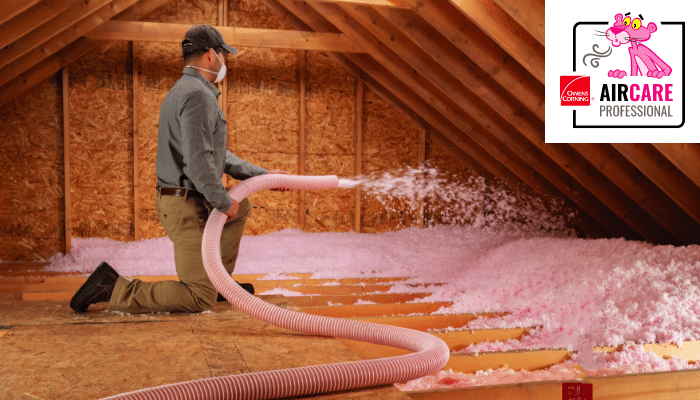Why Attic Insulation DFW is Essential for Energy Efficiency in Dallas-Fort Worth
Wiki Article
Discover the Different Sorts Of Attic Insulation and Their Unique Benefits for Your Home's Power Performance

Fiberglass Insulation
Fiberglass insulation is among one of the most typically utilized products for attic room insulation due to its outstanding thermal performance and cost-effectiveness. Made up of tiny glass fibers, this product efficiently catches air, producing a shielding obstacle that helps preserve consistent indoor temperature levels. Its high R-value per inch makes it especially efficient at standing up to warmth transfer, which is essential for energy conservation in homes.
Installation of fiberglass insulation is relatively uncomplicated, typically available in batts or loose-fill types, suiting various attic configurations. Additionally, it is non-combustible and resistant to dampness, reducing the danger of mold advancement. This sturdiness adds to its long life, making fiberglass a feasible lasting financial investment for homeowners.
Additionally, fiberglass insulation is commonly manufactured from recycled materials, which improves its eco-friendliness. The material can also add to soundproofing, decreasing sound transfer in between spaces. While it is essential to wear protective gear during setup to prevent inflammation from the fibers, the general benefits of fiberglass insulation, including energy savings and ecological factors to consider, make it a popular selection for boosting attic room efficiency and promoting a comfortable living environment.
Spray Foam Insulation
Spray foam insulation is a highly efficient choice for attic room insulation, understood for its premium air sealing and thermal performance. This cutting-edge insulation product is composed of a blend of isocyanate and polyol resin, which, when combined, increases rapidly to fill up gaps and dental caries in the attic room room. Its ability to follow different surfaces guarantees a continuous obstacle versus air leaks, significantly decreasing heat loss throughout colder months and warmth gain during warmer periods.Among the key advantages of spray foam insulation is its high R-value per inch, which indicates it offers superb thermal resistance in a reasonably thin application. This is particularly advantageous in attics where space is usually restricted. Additionally, spray foam can help decrease dampness build-up, decreasing the danger of mold and mildew and mildew development, which can be harmful to both the framework and indoor air high quality.
While the initial price of spray foam insulation may be greater than typical alternatives, its long-term power savings, paired with boosted comfort and enhanced home worth, make it a rewarding financial investment for homeowners seeking boosted power efficiency. Attic Insulation DFW. Generally, spray foam insulation stands out as an efficient remedy for optimizing attic insulation
Cellulose Insulation

Cellulose insulation is a prominent choice for attic insulation, largely made up of recycled paper products treated with fire resistants. This eco pleasant choice is known for its superb thermal performance, efficiently reducing warm transfer in both summer and winter season. The dense structure of cellulose allows it to fill up spaces and spaces in attic room spaces, giving a seamless obstacle versus air leakages.
One of the considerable advantages of cellulose insulation is its capacity to stand up to mold and mildew and bugs, owing to the fire retardant therapies used throughout manufacturing. In addition, it flaunts a high R-value per inch, which converts into premium power performance. Homeowners can expect lower cooling and heating costs as an outcome of improved insulation.
Setup is normally achieved with blowing loose cellulose right into the preferred location, allowing for a reliable and quick process. This technique additionally minimizes interruption to the existing framework. Cellulose insulation has a reasonably low read environmental effect, as its production process uses recycled products, adding to lasting building techniques.
Rock Woollen Insulation
Amongst the numerous choices for attic insulation, rock wool, also known as mineral woollen, sticks out as a result of its outstanding thermal and acoustic performance. Made from natural or recycled materials, rock wool is created by melting rock and rotating it into fibers, resulting in an item that supplies excellent insulation homes.One of the significant benefits of rock woollen insulation is its high R-value, which suggests its efficiency in withstanding warm flow. This characteristic not only improves power effectiveness however likewise contributes to maintaining a comfy interior temperature level year-round. In addition, rock woollen is inherently fire-resistant, making it a much safer alternative for homes as it can hold up against heats without melting or launching harmful fumes.
Additionally, rock wool insulation excels in soundproofing capacities, effectively lowering sound transmission between areas and from outside sources. This makes it an optimal choice for home owners looking for a calm living setting. Rock woollen is moisture-resistant, assisting to avoid mold and mildew growth and keeping the structural integrity of the attic room space. Overall, rock woollen insulation offers a comprehensive option for enhancing energy effectiveness, security, and convenience in domestic setups.
Glowing Barrier Insulation
Radiant barrier insulation acts as a reliable option for decreasing heat transfer in attics, especially in warmer climates. This kind of insulation works by showing glowing heat far from living areas, thus reducing the quantity of heat home that enters a home throughout hot weather condition - Attic Insulation DFW. Typically composed of an extremely reflective product, such as light weight aluminum foil, glowing obstacles are mounted Going Here in attics, dealing with the roofing, where they can obstruct inbound warmth from the sunThe main benefit of radiant barrier insulation is its capacity to reduced air conditioning expenses. By showing warm as opposed to absorbing it, glowing obstacles can assist maintain a more stable indoor temperature level, reducing the workload on air conditioning systems. This performance converts into lower energy bills and enhanced convenience for homeowners.
Along with power financial savings, radiant obstacles can likewise contribute to improved indoor air high quality. By decreasing heat buildup, they aid minimize humidity degrees, which can stop mold growth and improve overall air blood circulation. When mounted correctly, glowing obstacle insulation can be an important enhancement to any kind of energy-efficient home, making it a worthwhile factor to consider for home owners aiming to improve their attic insulation approach.
Verdict
To conclude, understanding the various sorts of attic room insulation-- fiberglass, spray foam, cellulose, rock woollen, and radiant obstacles-- makes it possible for property owners to make educated decisions regarding power efficiency. Each insulation type provides distinct benefits, such as exceptional thermal resistance, dampness administration, and sound depletion. By selecting the appropriate insulation material, considerable reductions in energy prices can be achieved, in addition to improvements in indoor comfort. Inevitably, the best option adds to an extra lasting living environment and advertises general power preservation.

In conclusion, recognizing the different kinds of attic room insulation-- fiberglass, spray foam, cellulose, rock wool, and radiant barriers-- allows homeowners to make educated choices concerning power effectiveness.
Report this wiki page